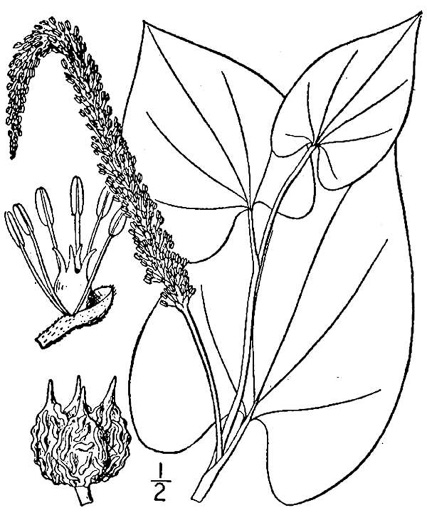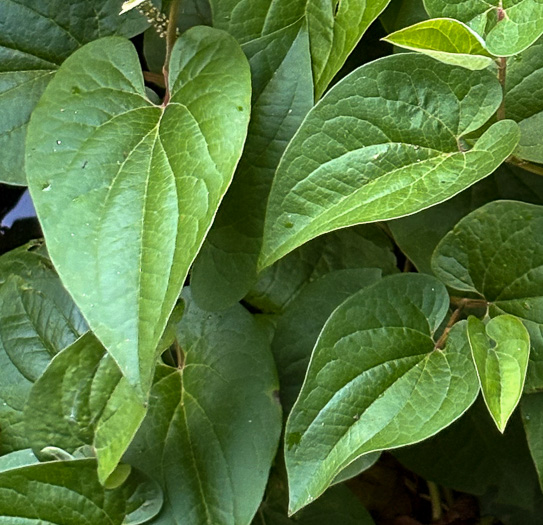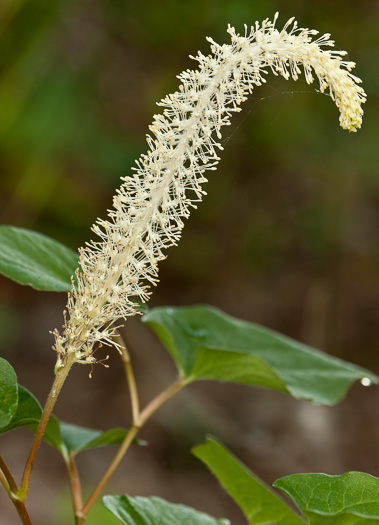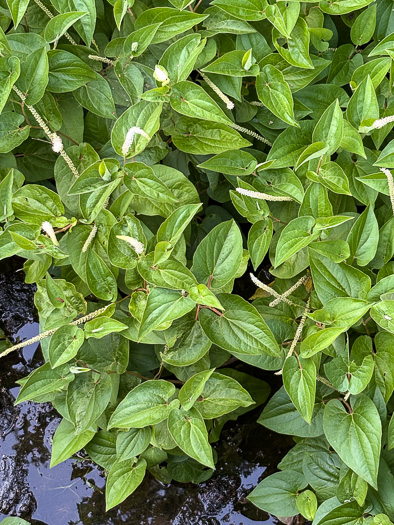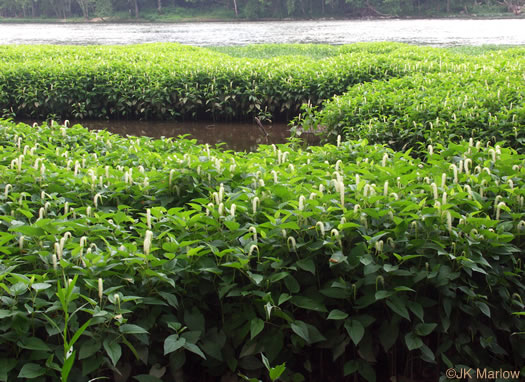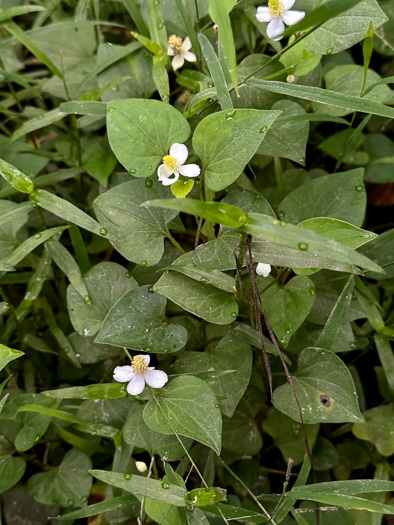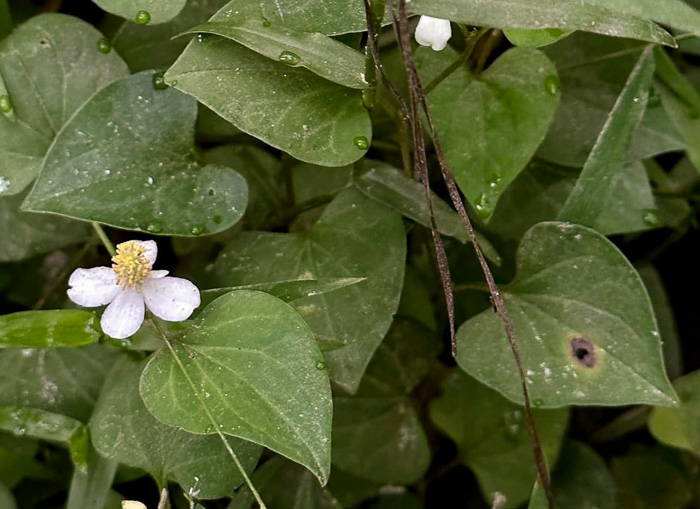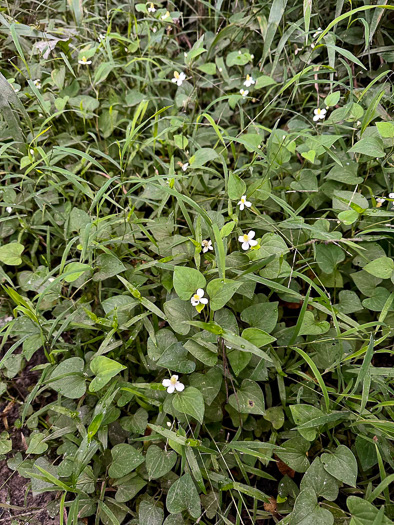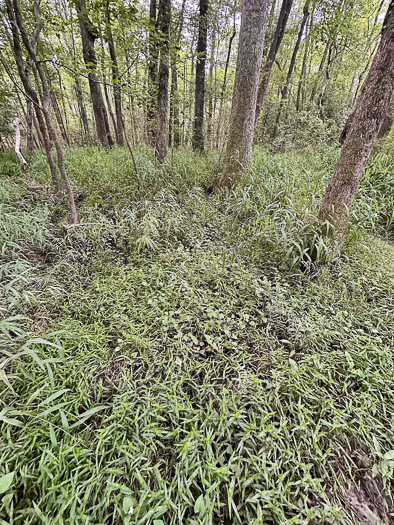Hovering over an image will enlarge it and point out features (works better on desktop than on mobile).
![]() A camera indicates there are pictures.
A camera indicates there are pictures.
![]() A speaker indicates that a botanical name is pronounced.
A speaker indicates that a botanical name is pronounced.
![]() A plus sign after a Latin name indicates that the species is further divided into varieties or subspecies.
A plus sign after a Latin name indicates that the species is further divided into varieties or subspecies.
Most habitat and range descriptions were obtained from Weakley's Flora.
Your search found 2 taxa in the family Saururaceae, Lizard's-tail family, as understood by PLANTS National Database.

![]()
![]() Common Name:
Lizard's-tail, Water-dragon
Common Name:
Lizard's-tail, Water-dragon
Weakley's Flora: (4/24/22) Saururus cernuus FAMILY: Saururaceae
SYNONYMOUS WITH PLANTS National Database: Saururus cernuus FAMILY: Saururaceae
SYNONYMOUS WITH Vascular Flora of the Carolinas (Radford, Ahles, & Bell, 1968): Saururus cernuus 050-01-001 FAMILY: Saururaceae
Habitat: Swamps, overwash pools in stream floodplains, freshwater and oligohaline tidal marshes, semi-permanently inundated rocky bars and shores, beaver ponds, ditches, usually where water ponds seasonally or periodically. In swamps of the Coastal Plain, Saururus often is dominant in large patches
Common (rare in Mountains)
Native to the Carolinas & Georgia

![]() Common Name:
Fishmint, Chameleon-plant, Fishleaf
Common Name:
Fishmint, Chameleon-plant, Fishleaf
Weakley's Flora: (4/14/23) Houttuynia cordata FAMILY: Saururaceae
SYNONYMOUS WITH PLANTS National Database: Houttuynia cordata FAMILY: Saururaceae
Habitat: Disturbed areas, moist suburban forests, ditches, less commonly (so far) spreading to bottomlands away from points of cultivation, spread from cultivation. This species is aggressive and difficult to control
Waif(s)
Non-native: east Asia
Your search found 2 taxa. You are on page PAGE 1 out of 1 pages.

